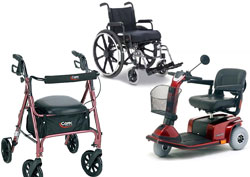By Jennifer Doctor
I don’t know when it happened but it officially became fall in the Northern Hemisphere. Typically I would moan at this thought, which makes me think about how many bags of leaves I need to rake this season (typically 100 around my house,) or worse yet, that winter and the freezing temperatures are approaching. But this year I’m hoping the new season brings a breath of fresh air.
T his summer, I realized my parents are getting old. Three out of the four had a significant health problem. And while, thankfully, all are doing better now, it made me face the reality that needs, plans and provisions need to change.
his summer, I realized my parents are getting old. Three out of the four had a significant health problem. And while, thankfully, all are doing better now, it made me face the reality that needs, plans and provisions need to change.
It happens to our products too.
We have been trained to pay attention when a product may need to be phased out, to be sun-setted. That is a quick death. It is sometimes easier to recognize than seeing the products that still have life left in them, but they need to be cared for differently. Some products just get old (or stale) without dying. Do we pay attention to the warning signs, or wait for the catastrophic event to wake us up?
- Warning sign #1: Diminished community chatter about potential enhancements
When the product was first launched, there was a lot of talk from internal and external sources that wanted more features, an enhanced user interface, and more partner connections. The calls to support were flowing regularly and you made money on implementation and training services. The product is no longer special; you’ve lost your buzz and excitement. Your product is common in the company, and the market.
- Warning sign #2: Taking more medications
Medicine alleviates the pain, but not the problem. You need to add more patches and fixes to keep the product operating, and more likely, interoperating with newer technology. Band-aid solutions start replacing launches. You’ve stopped updating the product road map. You no longer believe the market research.
- Warning sign #3: You’re moving slower
The fixes and patches that you need to apply are not the priority for the product any longer. Over time, as products mature, release versions contained fewer and fewer enhancements. You look hard to find the really “cool” changes to implement. Product launches are met with less excitement. When you do launch, it is late… really late and the time span between launches keeps increasing.
- Warning sign #4: Your friends are not around
The product has less support in executive meetings the sponsors have dwindled and it’s no longer the primary focus. Worse yet, competitors are giving the product away or exiting the business. And, worse yet, Marcom no longer has the time to update your collateral.
You may choose to ignore the warning signs, recognizing that the product still has a life; or, you may have contractual obligations that require you to maintain the product. You simply could have your head in the sand like an ostrich, when you know that you should be looking at the product lifecycle. Whatever the case, you need to have a plan. What do you do now? Do you provide the aid and assistance to rejuvenate the product and live another x number of years in a healthy lifestyle; or, do you recognize the life-support you’ve created and pull the plug?
Getting old, in life and products, doesn’t mean you’re not useful. It just means you need a different type of care plan. Before your product gets too old and you’re only option is to pull the plug, make a plan for how to care and nurture it in the later years. While often overlooked, this should be part of the long-term roadmap.
An emergency response at the end of the product’s life is not a strategy.
(Please share this on Twitter, LinkedIn and even Google+: “Your Product is Old” by@jidoctor: http://wp.me/pXBON-2VH #prodmktg #prodmgmt #roadmap #process #launch”)